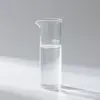+86-15212299029
- All
- Product Name
- Product Keyword
- Product Model
- Product Summary
- Product Description
- Multi Field Search
Views: 220 Author: tcchems Publish Time: 2025-11-23 Origin: Site











Content Menu
>> Is Kojic Acid an Exfoliant?
>> Comparison with Traditional Exfoliants
>>> Kojic Acid vs. AHAs and BHAs
>> Compatibility with Other Ingredients
Kojic acid is a popular ingredient in skincare, known primarily for its skin-lightening properties. Derived from fungi, it has gained traction in the beauty industry for its ability to reduce hyperpigmentation and even out skin tone. However, a common question arises: Is kojic acid an exfoliant? This article will explore the properties of kojic acid, its role in skincare, and how it compares to traditional exfoliants.

Kojic acid is a natural compound produced by certain fungi during the fermentation process of rice. It is primarily known for its ability to inhibit the production of melanin, the pigment responsible for skin color. This makes it a popular choice for treating dark spots, melasma, and other forms of hyperpigmentation.
Kojic acid works by inhibiting the enzyme tyrosinase, which is crucial in the production of melanin. By blocking this enzyme, kojic acid can help lighten existing dark spots and prevent new ones from forming. This mechanism is different from that of traditional exfoliants, which physically or chemically remove dead skin cells.
While kojic acid is not classified as a traditional exfoliant, it does have some mild exfoliating properties. Unlike alpha hydroxy acids (AHAs) or beta hydroxy acids (BHAs), which actively slough off dead skin cells, kojic acid primarily focuses on reducing pigmentation. However, it can enhance the overall appearance of the skin by promoting a more even skin tone and texture.
Exfoliants are substances that help remove dead skin cells from the surface of the skin. They can be categorized into two main types:
1. Physical Exfoliants: These include scrubs and brushes that physically remove dead skin cells.
2. Chemical Exfoliants: These include AHAs (like glycolic acid) and BHAs (like salicylic acid), which dissolve the bonds between dead skin cells, allowing them to be washed away.
- Mechanism of Action: Kojic acid inhibits melanin production, while AHAs and BHAs work by dissolving dead skin cells.
- Skin Type Suitability: Kojic acid is generally suitable for all skin types, especially sensitive skin, while AHAs and BHAs may cause irritation in sensitive individuals.
- Results: Kojic acid is more effective for treating pigmentation issues, whereas AHAs and BHAs are better for improving skin texture and reducing acne.
One of the primary benefits of kojic acid is its ability to brighten the skin. By reducing melanin production, it can help fade dark spots and create a more uniform complexion.
Kojic acid also possesses antioxidant properties, which can help protect the skin from free radical damage. This is important for maintaining healthy skin and preventing premature aging.
Kojic acid can be combined with other skincare ingredients, such as vitamin C and glycolic acid, to enhance its effects. This combination can provide both brightening and exfoliating benefits, making it a versatile addition to any skincare routine.
Kojic acid is typically found in concentrations ranging from 1% to 4% in skincare products. For those new to kojic acid, starting with a lower concentration is advisable to assess skin tolerance.
- Patch Test: Always perform a patch test before using a new product containing kojic acid to check for any adverse reactions.
- Frequency of Use: For best results, use kojic acid products 2-3 times a week, especially if combined with other exfoliating agents.
- Moisturization: Follow up with a good moisturizer to prevent dryness, as kojic acid can sometimes cause irritation.
While kojic acid is generally well-tolerated, some individuals may experience irritation, redness, or dryness, especially at higher concentrations. It is essential to monitor your skin's response and adjust usage accordingly.
In rare cases, individuals may have an allergic reaction to kojic acid. Symptoms can include itching, swelling, or hives. If any of these occur, discontinue use immediately and consult a healthcare professional.
Kojic acid is not a traditional exfoliant but offers unique benefits for skin brightening and pigmentation reduction. While it has some mild exfoliating properties, its primary function is to inhibit melanin production. For those looking to address hyperpigmentation while also improving skin texture, combining kojic acid with traditional exfoliants may provide the best results.

1. Can I use kojic acid every day?
- It is recommended to use kojic acid 2-3 times a week, especially if combined with other exfoliating agents, to avoid irritation.
2. Is kojic acid safe for sensitive skin?
- Yes, kojic acid is generally safe for sensitive skin, but it is advisable to start with a lower concentration and perform a patch test.
3. How long does it take to see results from kojic acid?
- Results can vary, but many users notice improvements in skin tone and reduction in dark spots within 4-6 weeks of consistent use.
4. Can I use kojic acid with other active ingredients?
- Yes, kojic acid can be combined with other ingredients like vitamin C and glycolic acid for enhanced effects, but be cautious of potential irritation.
5. What should I do if I experience irritation from kojic acid?
- If you experience irritation, reduce the frequency of use or discontinue use altogether. Consult a dermatologist if symptoms persist.
Hot Tags: China, Global, OEM, private label, manufacturers, factory, suppliers, manufacturing company



